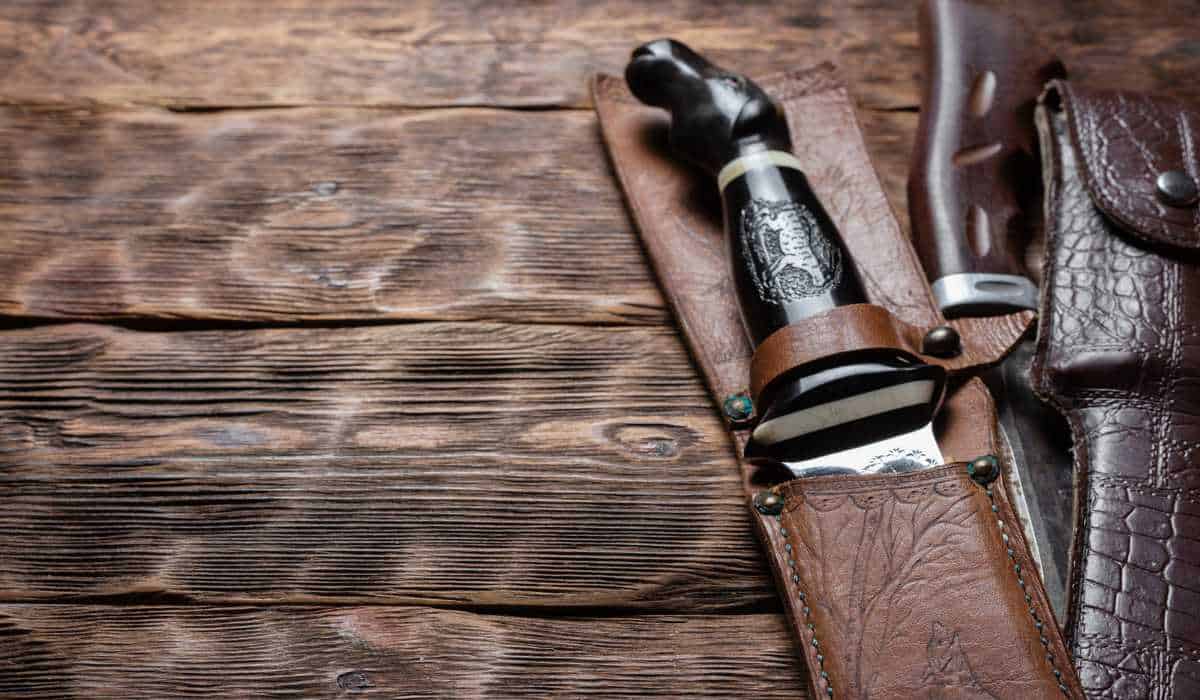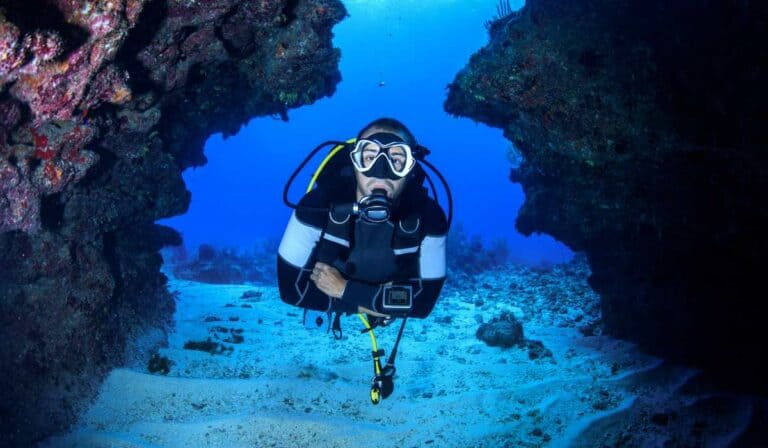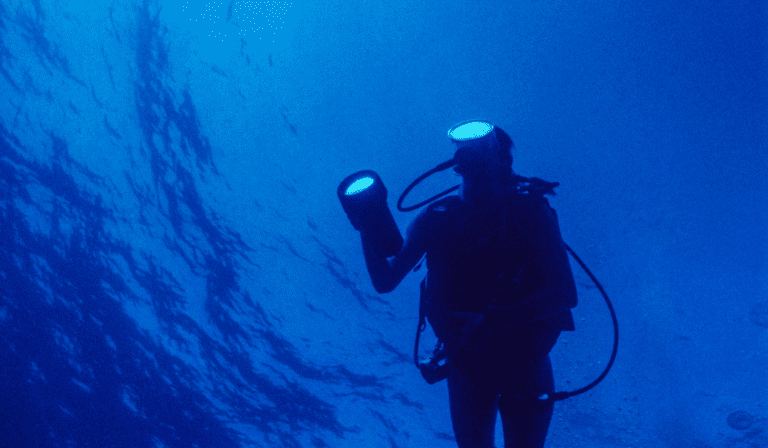Best Knives for Scuba Diving: Safety Tools for Exploring the Depths
When it comes to exploring the underwater world, knowing how to pick the best scuba knife for your dive is crucial. A reliable dive knife can make all the difference in emergency situations and even enhance your overall diving experience. In this comprehensive guide, we will delve into various aspects of selecting the perfect Knives For Scuba Diving that suit your needs.
We will discuss the different types of scuba diving knives available on the market and their specific uses. Additionally, we’ll cover blade materials such as stainless steel and titanium, along with handle materials that offer durability and comfort during use.
Furthermore, you’ll learn about choosing an appropriate knife size based on factors like personal preference and intended usage. We will also explore sheath options for carrying your dive knife securely while underwater.
Maintenance and care are essential components when owning a scuba knife; thus, our guide provides helpful tips on preserving its longevity. Finally, we’ll provide some great ideas for the best dive knives currently on the market to aid you in selecting one either for yourself or as a present for another diver.
Table of Contents
1. Types of Knives for Scuba Diving
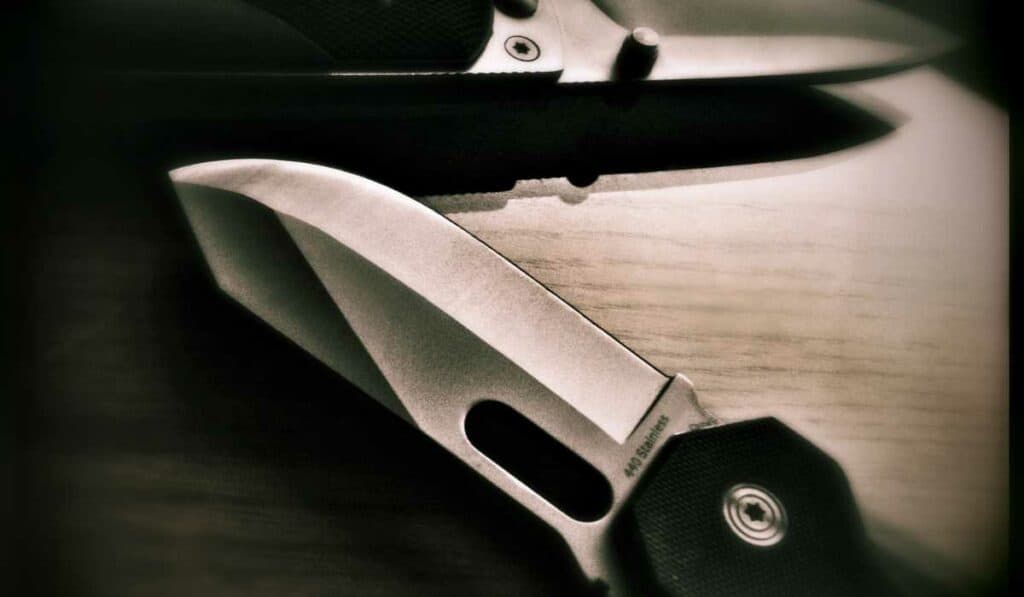
Scuba diving knives are essential tools for any diver, whether you’re a beginner or an experienced professional. Different styles and designs of scuba diving knives are available to suit a range of requirements and preferences. In this section, we’ll discuss the main types of scuba diving knives and their uses.
a) Fixed Blade Knives
Fixed-blade knives are popular among divers due to their durability and reliability. These knives have a solid construction with no moving parts, making them less likely to break or malfunction underwater. Their sturdy design allows for more forceful cutting when needed, such as when cutting through thick ropes or fishing nets.
b) Folding Knives
Folding knives offer convenience and portability by folding into a compact size when not in use. This feature makes them easy to store on your dive gear without taking up much space or causing discomfort during dives. However, they may not be as strong as fixed blade options since they rely on hinges that could weaken over time with exposure to saltwater.
c) Line Cutters & Z-Knives
Line cutters and Z-knives are specialized tools designed specifically for quickly slicing through lines, ropes, nets, kelp forests, and other entanglement hazards during dives. These devices typically feature a hooked shape that safely encloses the sharp edge within its body until it’s needed for cutting tasks.
d) Multi-Tools & Dive Tools
Multi-tools and dive tools combine several functions into one compact device, making them a versatile option for divers who want to carry fewer items on their dives. These tools often include features like scissors, pliers, screwdrivers, and bottle openers in addition to the knife blade.
Now that you’re familiar with the main types of scuba diving knives available, let’s move on to discussing the various blade materials used in these essential underwater tools.
Click here to read about Scuba Diving Cameras: Top Picks for Underwater Photography
2. Blade Materials
Scuba diving knives are typically made from stainless steel or titanium, both of which offer excellent corrosion resistance and durability. Stainless steel is the most common material used for dive knives due to its affordability and availability. However, titanium is becoming increasingly popular among divers due to its lightweight and strength.
When choosing a dive knife, it’s important to consider the type of diving you’ll be doing and the environment you’ll be in. For example, if you’ll be diving in saltwater, a stainless steel dive knife may be more suitable due to its resistance to corrosion. On the other hand, if you’ll be diving in freshwater, a titanium dive knife may be a better option since it’s less likely to corrode in freshwater environments.
3. Dive Knife Features
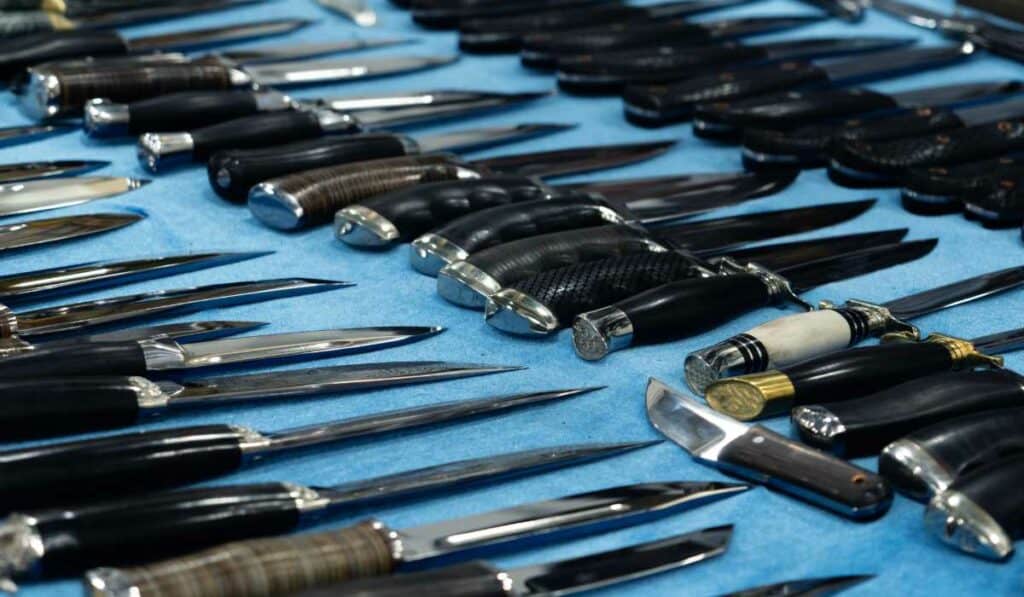
When selecting a dive knife, there are several features to consider, including the size and shape of the blade, the type of edge, and the tip of the knife.
a) Blade Size and Shape
The size and shape of the blade will depend on your personal preference and the type of diving you’ll be doing. A larger blade may be more suitable for cutting through thicker materials, while a smaller blade may be more maneuverable in tight spaces. The shape of the blade can also vary, with some knives featuring a straight edge and others featuring a serrated edge.
b) Edge Type
The type of edge on a dive knife can also vary, with some knives featuring a straight edge and others featuring a serrated edge. A straight edge is ideal for slicing through softer materials like fishing lines, while a serrated edge is better for cutting through tougher materials like rope and kelp.
c) Tip Type
The tip of the knife can be either blunt or sharp. A blunt tip is ideal for prying and digging, while a sharp tip is better for piercing and slicing. Some dive knives also feature a combination of both blunt and sharp tips.
Click here to read about The Costs Of Buying Your Own Scuba Equipment
4. Dive Knife Recommendations
There is a large selection of dive knives available on the market, making it challenging to choose the right one for your needs. Here are some dive knife recommendations based on what recreational divers prefer:
- Best Overall: Cressi Borg
- Best Budget: Promate Scuba Dive Snorkel Titanium Knife
- Best for Saltwater: Tusa X-Pert II Titanium Dive Knife
- Best for Freshwater: Atomic Aquatics Ti6 Titanium Dive Knife
- Best Serrated Edge: Spyderco Atlantic Salt
- Best Blunt Tip: Mares Force Bat Titanium Knife
- Best Sharp Tip: Aqua Lung Squeeze Lock Knife
5. Buying Guide

When buying a dive knife, it’s essential to consider the type of diving you’ll be doing, the environment you’ll be in, and your personal preferences. Here are some factors to keep in mind:
- Blade material: Stainless steel is the most common material used for dive knives, but titanium is becoming increasingly popular due to its lightweight and strength.
- Blade size and shape: Consider the size and shape of the blade based on the type of diving you’ll be doing.
- Edge type: Decide whether you want a straight edge or a serrated edge based on the materials you’ll be cutting.
- Tip type: Choose between a blunt tip or a sharp tip based on your personal preference and the tasks you’ll be performing.
- Knife securely: Make sure the knife securely attaches to your dive gear for easy access during dives.
Click here to read about 6 Top Rated Professional Scuba Diving Masks
6. Maintenance & Care
Taking proper care of your scuba diving knife is essential to ensure its longevity and optimal performance during dives. To ensure your knife remains in peak condition, this guide will provide tips for cleaning and storing it when not diving.
A. Cleaning Your Scuba Knife
Post-dive, it is imperative to clean your scuba knife thoroughly in order to rid the blade and handle of any saltwater deposits or particles that have been collected. Follow these steps for effective cleaning:
- Rinse the knife with fresh water immediately after each dive.
- Use a soft brush or cloth to gently scrub away any visible dirt or grime from the blade and handle.
- If necessary, use mild soap along with water for more stubborn stains or buildup.
- Dry the knife completely using a soft towel before storing it away.
B. Sharpening Your Blade
A sharp blade is vital for efficient cutting underwater, so regular sharpening should be part of your routine maintenance plan. You can either do this yourself using a suitable sharpening tool like a whetstone (learn how here) or take it to a professional if you’re unsure about doing it correctly.
C. Lubricating Moving Parts
If your scuba diving knife has moving parts such as folding mechanisms or locking systems, make sure they are properly lubricated at all times by applying appropriate oil (e.g., silicone-based) periodically.
D. Storing Your Scuba Knife
Proper storage is essential to prevent rust and corrosion, as well as to keep your knife in top condition for future dives. Here are some tips on how to store your scuba diving knife:
- Ensure the knife is completely dry before storing it.
- Store the knife in a cool, dry place away from direct sunlight or extreme temperatures.
- If possible, remove the blade from its sheath during storage to allow air circulation and minimize moisture buildup.
Maintaining your scuba diving knife may seem like an extra chore after a long day of underwater exploration, but taking these simple steps will ensure that you always have a reliable tool by your side when you need it most.
Proper maintenance and care of your scuba diving knife are essential for a safe, enjoyable dive. Moving on to the next heading, we will explore which are the best knives available for divers today.
The Idea:
For optimal performance and longevity of your scuba diving knife, proper care is essential. This includes cleaning the blade and handle after each dive with fresh water and mild soap if necessary, sharpening the blade regularly using a suitable tool or taking it to a professional, lubricating moving parts periodically with appropriate oil, and storing the knife in a cool, dry place away from direct sunlight or extreme temperatures while ensuring that it’s completely dry before storage.
7. Best Scuba Diving Knives
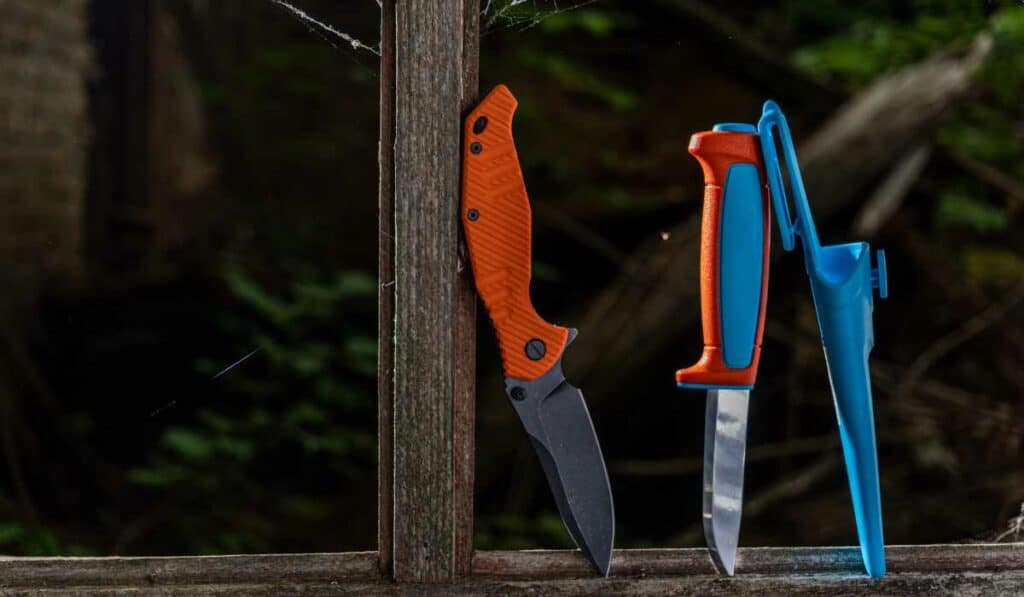
Selecting the ideal scuba diving knife for your requirements can be a challenging undertaking, with numerous selections to pick from. To make choosing easier, we’ve gathered a selection of the best scuba diving knives that will meet various needs and preferences.
- Cressi Borg Long Blade Knife: This versatile dive knife features a high-quality Japanese stainless steel blade with both serrated and smooth edges, making it suitable for cutting through different materials underwater. Its durable handle provides excellent grip even when wet or wearing gloves. The Cressi Borg also comes with a locking sheath for secure storage during dives. Check out more details about this popular choice here.
- Aqua Lung Squeeze Lock Dive Knife: Designed specifically for easy one-handed operation, this compact dive knife is made from corrosion-resistant stainless steel and offers both serrated and straight-edge blades. Its patented squeeze-lock mechanism ensures safe storage in its low-profile sheath while allowing quick access when needed most during your dives. Learn more about Aqua Lung’s innovative design here.
- TUSA FK-940 X-Pert II Titanium Dive Knife: If you’re looking for lightweight durability combined with exceptional performance, consider TUSA’s FK-940 X-Pert II Titanium Dive Knife. Made from titanium alloy material known for its resistance to corrosion and ability to maintain sharpness longer than traditional steel blades, this dive knife is perfect for advanced divers. Its ergonomic handle and quick-release sheath makes it easy to use during your underwater adventures. Discover more about this high-quality option here.
- Atomic Aquatics Titanium Ti6: Boasting a full-tang titanium blade, the Atomic Aquatics Titanium Ti6 offers unmatched strength and corrosion resistance in a lightweight package. This dive knife features both serrated and straight edges, as well as a line-cutting notch for versatile cutting capabilities underwater. The comfortable grip handle ensures secure handling even when wet or wearing gloves. Explore more about this top-of-the-line choice here.
- Promate Scuba Dive Snorkel Titanium Knife: Perfect for those who prefer compact knives without compromising on performance, the Promate Scuba Dive Snorkel Titanium Knife is an excellent choice. Made from titanium material that resists corrosion better than stainless steel blades, its sharp edge can easily cut through various materials encountered while diving or snorkeling. With its streamlined design and locking sheath system, you’ll have no trouble carrying this knife with you on all your underwater excursions. Check out more information about this handy tool here.
No matter which scuba diving knife you choose from our list of recommendations above, always remember to prioritize safety by keeping it properly maintained and stored securely in its sheath when not in use. Happy diving.
Click here to read about Exciting Scuba Diving Books for Adventure Seekers
The Idea:
This section provides a list of the best scuba diving knives for different types of divers and preferences, including the Cressi Borg Long Blade Knife, Aqua Lung Squeeze Lock Dive Knife, TUSA FK-940 X-Pert II Titanium Dive Knife, Atomic Aquatics Titanium Ti6, and Promate Scuba Dive Snorkel Titanium Knife. Each knife has unique features such as corrosion resistance and versatile cutting capabilities underwater. It is important to prioritize safety by keeping the knife properly maintained and stored securely in its sheath when not in use.
FAQs about How to Pick the Best Scuba Knive for Your Dives
How to Choose the Best Scuba Knife for Your Dives
Here are some factors to consider when choosing the best scuba knife for your dives:
Blade Material: Stainless steel and titanium are the most popular materials for dive knives due to their corrosion resistance. Titanium is more expensive but lighter and stronger than stainless steel.
Handle Materials: Look for non-slip materials like rubber or plastic for a comfortable grip. Metal handles can be slippery and uncomfortable to hold for extended periods.
Size: The ideal size depends on your needs and personal preference. A compact and lightweight knife is generally recommended for ease of use and storage.
Sheath: A reliable sheath is crucial for secure storage and easy accessibility during dives. Look for options that allow you to attach the knife securely to your gear.
Dive Knife Features: Consider additional features like serrated edges for sawing through tough materials, blunt tips to avoid accidental punctures, and folding knives for compact storage.
What Makes a Good Scuba Knife?
A good scuba knife should be made from durable and corrosion-resistant materials like stainless steel or titanium. It should have a comfortable grip with non-slip handle materials like rubber or plastic. The ideal size depends on your needs but generally should be compact and lightweight. A reliable sheath ensures easy accessibility underwater.
What is the Most Likely Use for Dive Knives Underwater?
Dive knives are primarily used for cutting through entanglements such as fishing lines, nets, kelp, ropes, and other debris that may pose hazards to divers. They can also serve as tools for prying objects loose or signaling by tapping on tanks when verbal communication isn’t possible.
What Kind of Knife Do Scuba Divers Use?
Scuba divers typically use specialized dive knives designed specifically for underwater environments. These knives come in various types: drop point blades (for general-purpose cutting), blunt tip blades (to avoid puncturing equipment accidentally), and serrated edges (for sawing through tough materials). Popular choices include stainless steel and titanium-based models due to their durability and resistance to corrosion.
Conclusion
Selecting a suitable scuba diving knife is an essential choice that can have a considerable effect on your safety and overall experience. When selecting a scuba diving knife, various aspects such as blade and handle materials, sizes, sheath options, and maintenance requirements should be taken into account. By understanding these factors and doing proper research before purchasing a scuba diving knife, you can ensure that you have a reliable tool by your side during all of your underwater adventures.
In conclusion, whether you’re a beginner or an experienced diver looking for the perfect scuba diving knife to add to your gear collection, taking the time to consider all of these factors will help you make an informed decision. Safety should always be of utmost importance when selecting any kind of diving gear.

